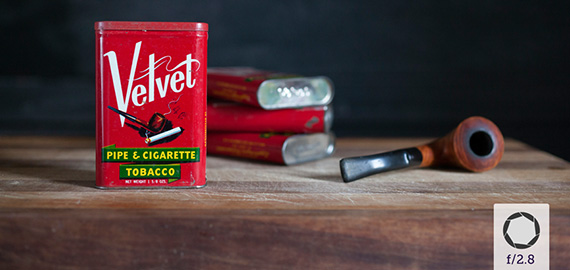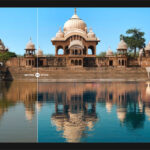Successfully manipulate shutter speed and aperture with these tips for shooting compelling photos with dramatic effect. Plus, get even more industry secrets when you download Craftsy’s printable eGuide to Understanding Exposure for Better Photos, featuring helpful tutorials on ISO, shutter speed, aperture, proper exposure and more.
1. Capture movement using slow shutter speeds.
Give a sense of motion by creating a bit of blurriness in the subject or background of your photo. By using a slower shutter speed and panning with your subject, say 1/60 second for a race car passing by, you can convey the speed at which the car is moving.

“First pan shot” captured by Greg Knapp at 1/40 of a second (Click image to see more from Greg Knapp)
2. Shoot nighttime landscapes using slow shutter speeds.
A slow shutter speed may also be useful in low light situations like nighttime landscapes. If you use a tripod, you can still get a sharp image using a slow shutter speed. Even in a very dark place, you might be surprised at the amount of light you can gather into your photo with a long shutter speed.
3. Freeze motion with a fast shutter speed for sports photos.

Use a fast shutter speed to freeze action.
Athletes can move very quickly and slower shutter speeds result in blurry subjects. Sports photographers use fast shutter speeds — 1/1000 second or more — to freeze the action. You can also use a fast shutter speed in very bright situations, like taking a photo of a very bright sky, or the sun as it is rising.
4. Portraits usually look great on wide open apertures.

Use a wide aperture for portraits.
Get your subject sharp and let the background fade out of focus with their narrow depth of field. Stop your lens all the way down as low as it will go and see how it looks on people. Ideally, you have something that goes to f/2 or f/2.8 or lower. If not, see what you can do at your lowest aperture. Most lenses will do at least f/3.5 or f/4.
5. Use a shutter speed of 1/60 of a second or faster for portraits.
When shooting portraits, you need a shutter speed fast enough to freeze your subject, no matter whether you are hand-holding the camera, the camera is on a tripod, or you’re using a short focal length (shorter than 60mm, using the inverse rule). When someone is standing still posing for a photo, 1/60 of a second is usually fast enough to get a sharp photo free of any motion blur.
6. Use the lowest ISO setting you can to avoid digital noise.
While sometimes the digital noise is a compromise you have to live with in order to get your shot, try starting at 100 (or as low as your camera will go) and then decide what your shutter speed and aperture need to be. If you can’t get your aperture any wider or your shutter speed any slower and still get the image you want, then start to crank up the ISO.

“Fallen Star” captured by Dominik Bartsch at ISO 100 (Click image to see more from Dominik Bartsch)
Ready to take the next step towards getting the best shots every time? Get Craftsy’s eGuide to Understanding Exposure for Better Photos and enjoy a visual, printable overview of depth of field and much more.
How do you keeping the important parts of your composition in focus?
Like This Article?
Don't Miss The Next One!
Join over 100,000 photographers of all experience levels who receive our free photography tips and articles to stay current:







Leave a Reply